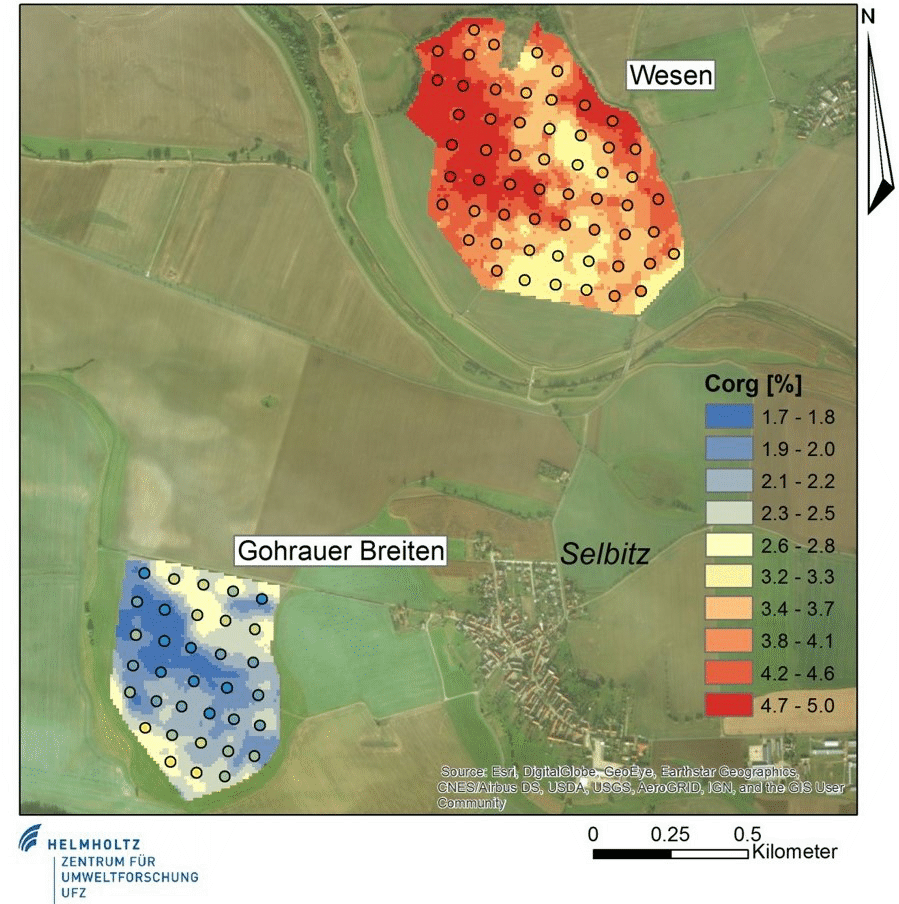
MeSsHumus
Method and sensors development for in-situ determination of humus content in soils and derivation of recommendations for management
Duration: 01/20 - 12/22 (36 months)
Funding: BMBF
Partner: Agricon, Soilution
A sufficient humus content in soil is a prerequisite for sustainable and natural soil fertility. The humus content positively influences, among other things, soil organisms, the concentration of plant nutrients and water availability. It also prevents erosion and binds CO2.
Careful cultivation can maintain and increase the humus content of agricultural soils. Therefore, knowledge of the exact humus content of fields holds essential information on whether farming practices are already sustainable and soil-conserving or whether they can still be improved. However, determining humus content directly by conventional methods is too costly for widespread use in agricultural practice. Therefore, the Department of Monitoring and Exploration Technologies (MET), in collaboration with its project partners Agricon and Soilution, is developing a mobile sensor for in-situ determination of humus content and soil mapping with high spatial resolution.
The task of the Department MET is the investigation of soil samples using optical spectroscopy in the visible and near-infrared range (350 - 2500 nm wavelength). Spectroscopy is used in soil science to measure and predict soil physical and chemical properties indirectly. In the project, the assumed correlation between measured spectra and humus content is to be examined using regression analysis and calibrating a model. The project partners Agricon and Soilution are involved in the development of the sampling module for field use and a software solution that can evaluate and display the measured data in real-time. The cooperation between the three partners aims to make the mobile sensor ready for the market, so it is available for agricultural practice after the end of the project.